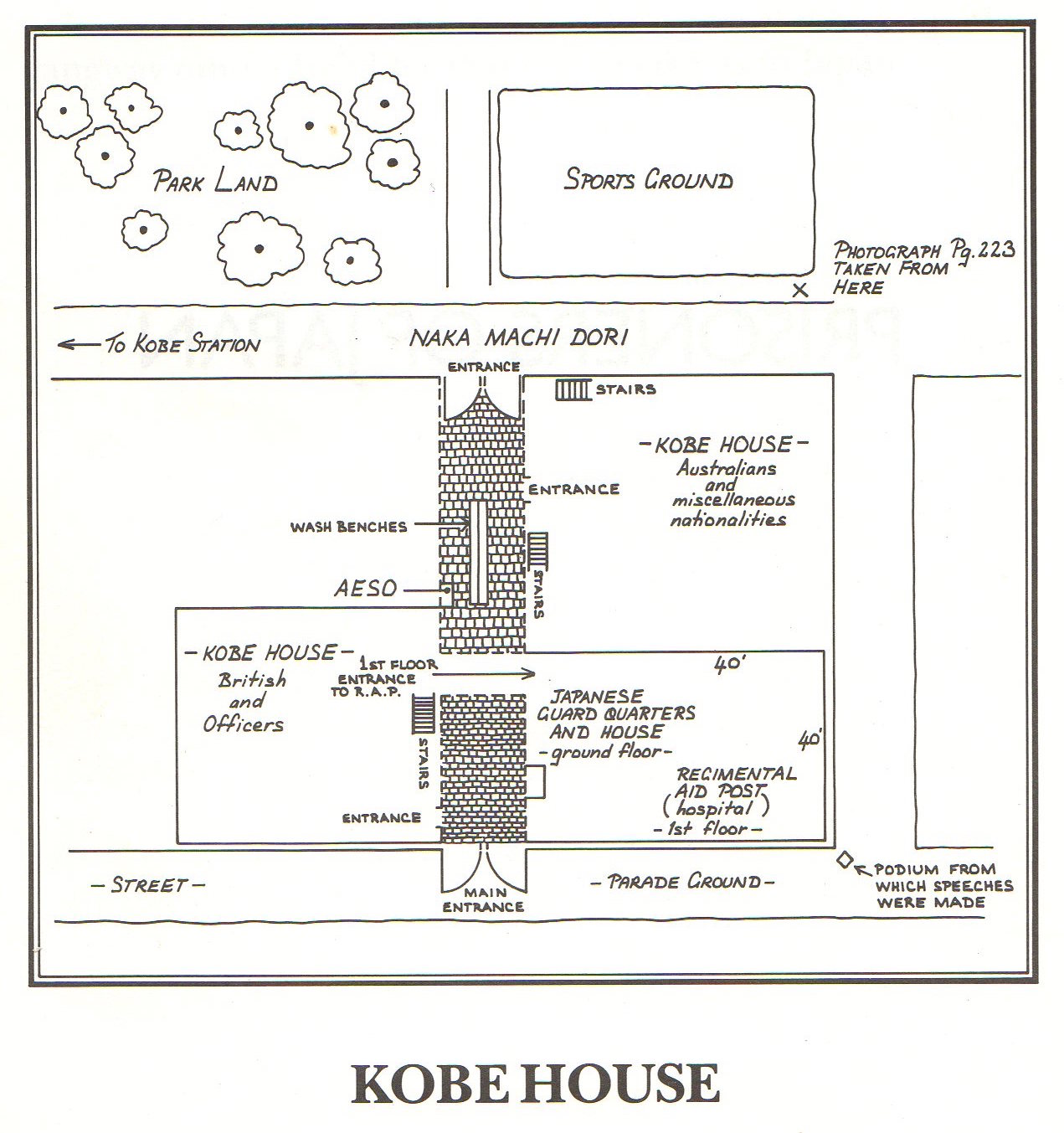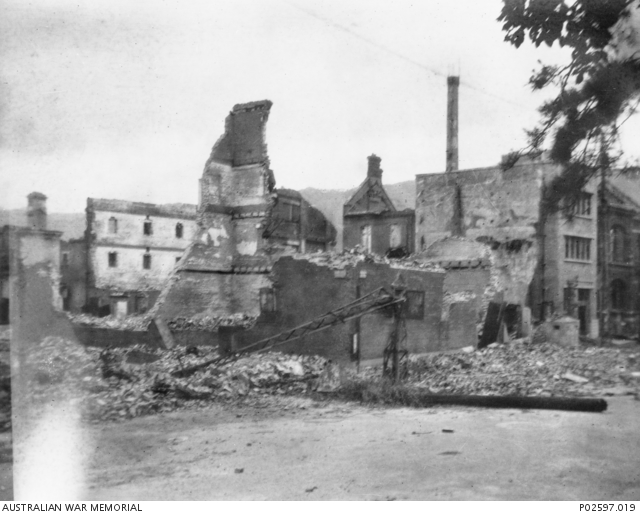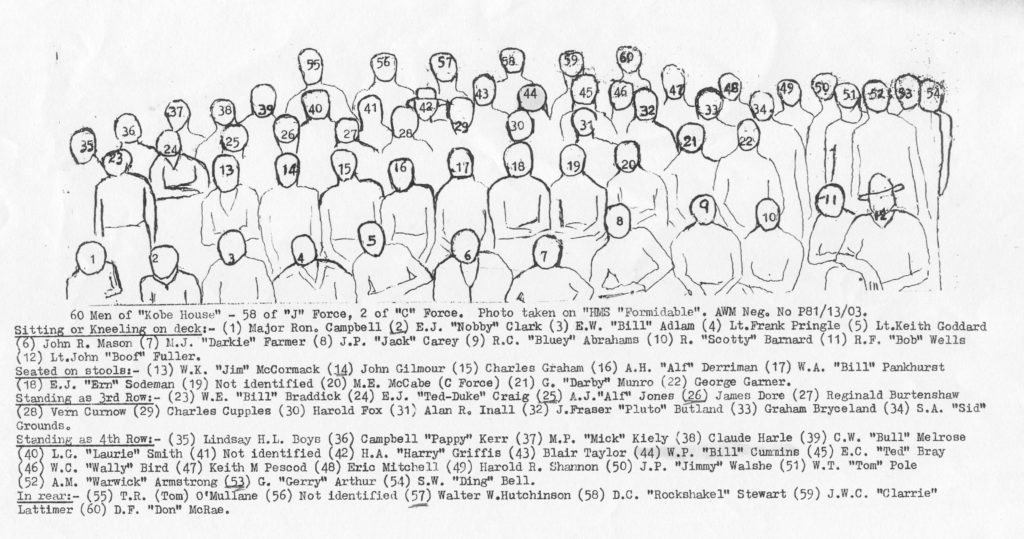May 1943 saw the departure from Singapore of 900 prisoners, 600 British and 300 Australians on Wales Maru forming ‘J’ Force. June 7th the Wales Maru arrived Moji and the POWs entrained to one of several POW Camps. 250 Australians including 20 2/4th Machine gunners were destined for Kobe.
Please read the story of Wales Maru departing Singapore 1943
Kobe began its life as a tiny fishing village but over time became part of the most highly industrialised area in the Japanese Empire. The Osaka – Kobe – Kyoto area produced 25% of all Japan’s rolled iron and steel products approximately 30% of her naval and merchant ships and 30% of her marine engines.
Kobe House Camp was in two warehouses converted into barracks, about half a mile from the harbour with its wharves and factories. Buildings were dark, dirty and venomous, ill ventilated and crowded. Each man lived, ate and slept in his twenty seven inches of sleeping space.
The POWs soon found themselves contracted out to work in some of the many industries of Kobe Port such as factories, iron foundries, shipbuilding yards, stevedoring companies and various warehouses. Owned by well-known companies in today’s business/manufacturing world.

Above: Bombs falling on Mitsubishi Steel Works, Kobe, Japan 1945. We wish to acknowledge this photo from ‘The Digital Collections of The National WWII Museum’. New Orleans, USA.
‘Japanese steel plant hit–Bombs rain on the Mitsubishi Steel Works at Kobe and on shipping in the harbor during an attack by U.S. Navy carrier-based aircraft. Fleets of American B-29 Superfortresses and carrier aircraft are raking the Japanese home islands’
https://www.ww2online.org/image/bombs-falling-mitsubishi-steel-works-kobe-japan-1945
nationalww2museum.org
Read the story of Gilmour, Hutchinson and Ramsbottom
Also cheeky Wally Huchinson’s bath
Please read about Showa Denki
Please read Frank Hinnrichsen’s Affadavit
Plan as per John Lane’s book Summer Will Come Again, the photograph below is the one he refers to in his plan
Above: The ruins of Kobe House which was bombed on 5 June 1945. This was the home of J Force Prisoners of War (POWs) before it was destroyed by 500 lb incendiary oil bombs dropped by Americans. The rubble in the foreground is all that remains of the Australian quarters.
Read about the bombing of Kobe
Kobe House POW Camp survivors on the way home from Japan on HMS Formidable.
Names of Kobe House survivors.
Norman Joseph Harris WX4985 – not identified in the above photo.
Harris left 14/2/1945 with a work party under Lt K.W. Goddard to Toyo.
TOYAMA
The men in this party led by Lt Goddard travelled 12 miles to Toyama steel foundry in a special electric train. Other 2/4th in this party included Jim Dore, Edwin Clark, Gerry Arthur and Arthur Draper. The work here was similar to that at Showa-Denki in that small small rail carts were brought to the furnaces from scrap heaps and from the furnaces to slag heaps. Known as a dirty job and on a scale was about as popular as Showa-Denki.
Read further about Showa-Denki
Read affidavit for War Trials
Read the list of 2/4th men who were selected with ‘J’ Force
Kobe was then the sixth largest city with a population of one million. 84 air raids over the city occurred between 18 April 1942 through to 15 August 1945. 1200 bombers dropped 8,000 tons bombs. On 24 July 1945, a B-29 dropped 4 ‘pumpkin bombs’ – experimental ‘mock’ atomic bombs with the same weight and scale as ‘little boy’.
Just after midnight, on 6 Aug 1945, 261 B-29s bombed Kobe.
8 hours later, ‘Little Boy’ was dropped on Hiroshima.
It is said the death rate of civilians per sq. mile in Kobe’s urban area was more severe than any other Japanese city, including Hiroshima and Tokyo.





